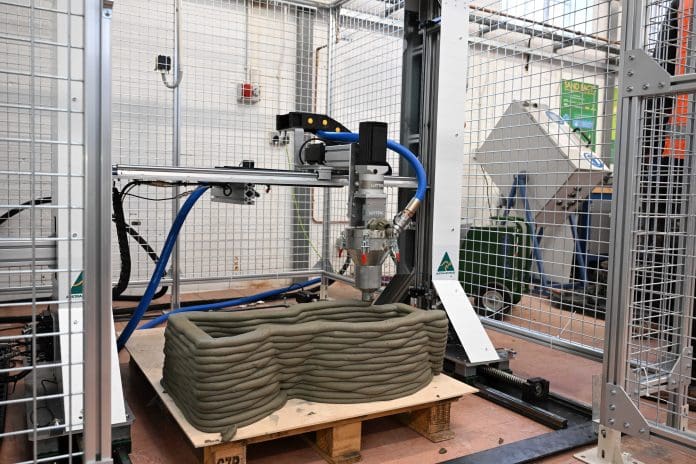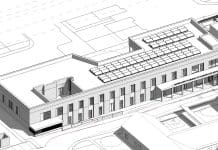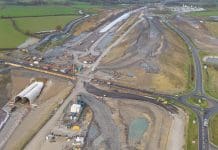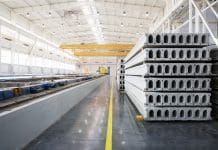
As Northumbria University starts a collaborative project between academia and industry to further advance the capabilities of 3D concrete printing, assistant professor of structural engineering Dr Mohammadali Rezazadeh believes the technology offers huge potential to meet housing demands while shaping a more sustainable future
The world is facing an urgent demand for more housing, with populations rising and cities expanding at a remarkable rate. The global housing crisis also highlights the need for sustainable infrastructure that is durable, offers proper long-term performance and has low maintenance costs.
At the same time, there is growing pressure on the construction industry to reduce its environmental impact.
The built environment plays a significant role in global greenhouse gas emissions, with buildings and construction accounting for roughly 21% of emissions worldwide. Concrete, a key material in construction, contributes around 8% of those emissions.
However, concrete offer numerous benefits over steel and timber for infrastructures, including higher durability and fire resistance, low maintenance, cost-effectiveness and design flexibility.
Despite its benefits, traditional concrete casting methods are increasingly recognised as unsustainable due to their environmental impact, resource inefficiency and high levels of waste generation.
This has driven interest in innovative technologies like 3D concrete printing, which offer exciting potential to address housing shortages and create more sustainable infrastructures.
What makes 3D concrete printing different?
As a cutting-edge construction technique, 3D concrete printing automates the building process by layering cement-based materials, following a digital design to create various shapes and sizes.
Unlike traditional concrete casting methods that require moulds and significant labour costs, 3D printing enables faster, more cost-effective and resource-efficient construction, without the need for moulding.
One of the key advantages of 3D concrete printing is its ability to reduce material waste. The technology accurately layers concrete where it is needed and minimises the material consumption.
Furthermore, 3D printing technology offers greater flexibility in design, enabling architects and engineers to create complex concrete structures that would be challenging or costly to achieve using conventional methods.
These capabilities of 3D printing technology are particularly relevant for addressing the housing crisis by facilitating the rapid construction of affordable homes and supporting the
development of sustainable infrastructure through the production of highly customisable structures.
Additionally, the potential of 3D concrete printing can be enhanced by integrating sustainable materials into the concrete mix, such as recycled aggregates or geopolymer binders, positioning it as an environmentally friendly construction system.
Overcoming challenges for stronger and more durable structures
While the durability and structural performance of 3D concrete printing are areas with room for improvement, they also offer exciting opportunities for innovation.
A key challenge in this area is the lack of proper internal reinforcement system in 3D printed concrete as traditional steel reinforcement meshes, while effective, are susceptible to corrosion which can compromise the durability of structures.
These challenges highlight the potential for developing advanced reinforcement techniques using materials with high strength and corrosion resistance to enhance the structural performance and durability of 3D printed concrete structures, paving the way for even broader applications in construction.
Collaborative research between academia and industry
To further advance the capabilities of 3D concrete printing, collaboration between academia and industry is essential.
A leading example of such collaboration is the partnership between Northumbria University, Luyten 3D, a global leader in 3D construction printing technology, and UK-based sustainable technology company ChangeMaker 3D. This partnership has led to the establishment of a new 3D printing capability within Northumbria’s Structures Laboratory, supported by a Royal Society Research grant.
Our research focuses on four key aspects of 3D concrete printing: eco-friendly materials, structural performance, environmental sustainability and cost-effectiveness.
By incorporating recycled materials into the concrete mix and exploring alternative binders such as geopolymer-based solutions, we are working to reduce the carbon footprint of 3D printed concrete structures.
Additionally, advanced reinforcement systems using composite materials, such as fibre-reinforced polymers (FRPs) or textile-based grids, are being used to enhance the performance and durability of 3D-printed structures.
A particular area of focus is the development of 3D concrete printing for shell infrastructures, such as water and biogas tanks and manholes, which require durable, affordable, and customisable structures. With its precision and material efficiency, 3D printing offers a more cost-effective alternative for producing concrete shell structures while meeting both structural performance and sustainability goals.
In addition to the research and innovation opportunities that access to 3D concrete printing technology provides, it also offers our students the opportunity to expand their skills and help us to increase diversity in the construction industry.
Through this skill development, we are not only helping to produce a talent pipeline for the future construction workforce but also preparing our future designers and engineers to integrate 3D concrete printing into all aspects of the construction sector.
Shaping a sustainable future
The potential of 3D concrete printing is clear. Imagine a world where affordable, sustainable homes are printed on-site in just a few days, addressing housing shortages while minimising environmental impact. With tailored designs and minimal waste, cities could benefit from resilient infrastructure that meets the unique needs of local communities.
The journey is just beginning, but through continued collaboration between academia and industry, for the future of sustainable construction, 3D concrete printing plays a pivotal role in transforming the construction industry, making it smarter, faster and more environmentally responsible.













